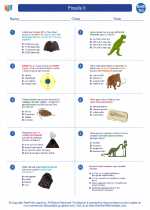Fertilization in Plants
Fertilization is a crucial process in the life cycle of plants. It involves the fusion of male and female gametes to form a zygote, which eventually develops into a new plant. Here's a comprehensive study guide to help you understand the concept of fertilization in plants:
Overview of Fertilization
1. Definition: Fertilization is the process of fusion of a male gamete (pollen) with a female gamete (ovule) to form a zygote in plants.
2. Importance: Fertilization is essential for the production of seeds, which are necessary for the continuation of the plant species.
Process of Fertilization
1. Pollen Transfer: Pollen grains are transferred from the anther of the stamen to the stigma of the pistil, either by wind, insects, or other pollinators.
2. Germination of Pollen: Once on the stigma, the pollen grain germinates and produces a pollen tube, which grows down the style towards the ovary.
3. Entry of Pollen Tube into Ovule: The pollen tube penetrates the ovule through an opening called the micropyle.
4. Fusion of Gametes: The male gamete (sperm cell) travels through the pollen tube and fuses with the female gamete (egg cell) inside the ovule, resulting in the formation of a zygote.
5. Seed Formation: The zygote develops into an embryo, and the ovule matures into a seed, containing the embryo and food reserves.
Factors Affecting Fertilization
1. Pollination: Successful fertilization depends on effective pollination, where pollen is transferred to the stigma of a compatible flower.
2. Environmental Conditions: Factors such as temperature, humidity, and availability of water can influence the success of fertilization.
3. Genetic Compatibility: The genetic compatibility between the pollen and ovule of the same species is crucial for successful fertilization.
Quiz Yourself!
- What is the main outcome of fertilization in plants?
- Describe the process of pollen transfer in plants.
- Explain the significance of genetic compatibility in fertilization.
Now that you have a solid understanding of fertilization in plants, you are well-equipped to explore this topic further and ace any related assessments!



